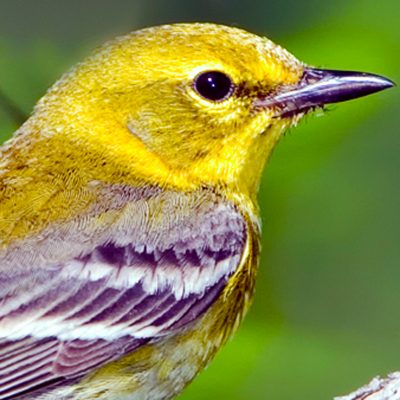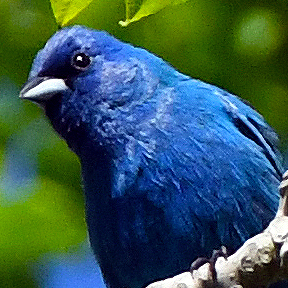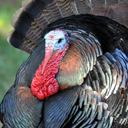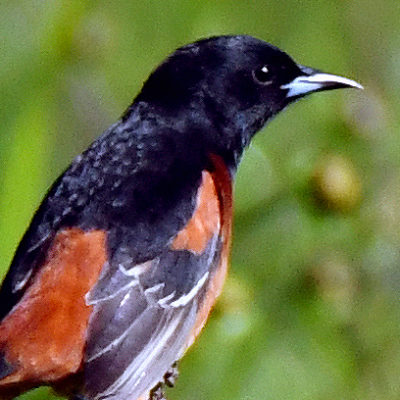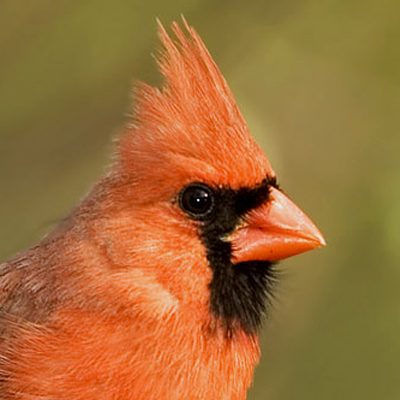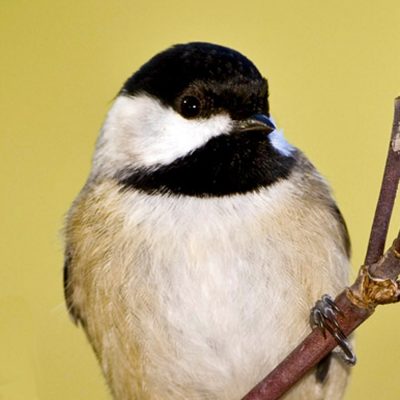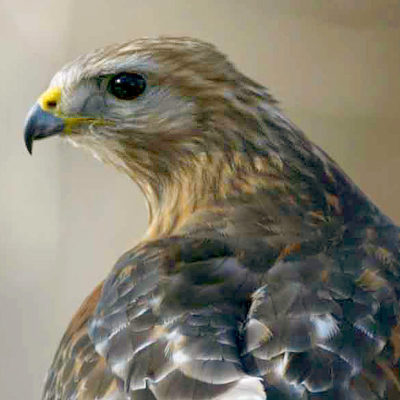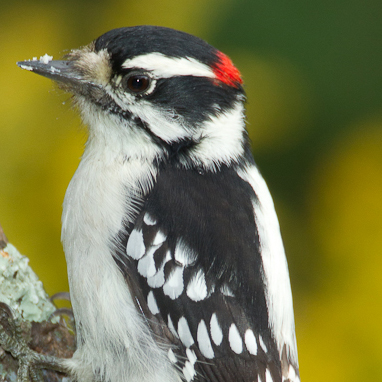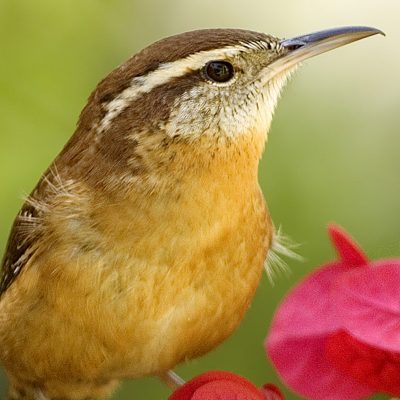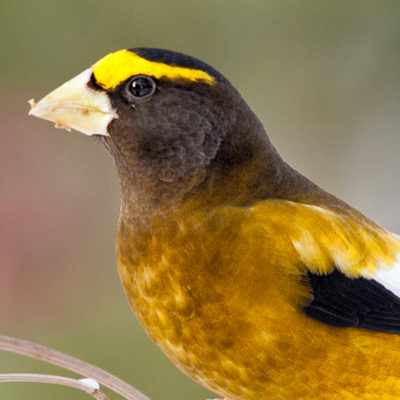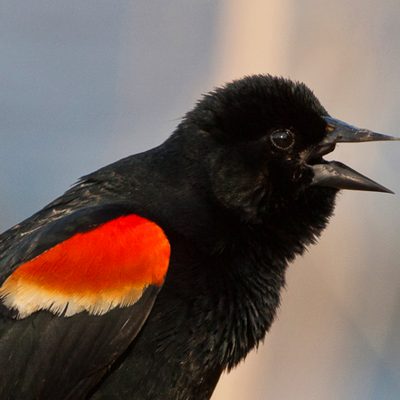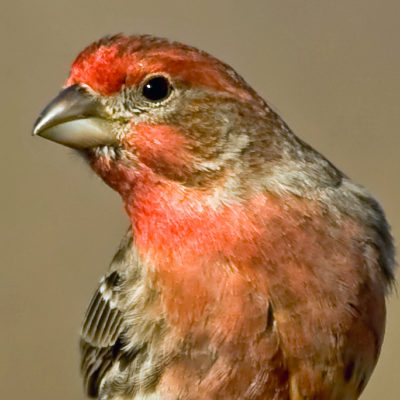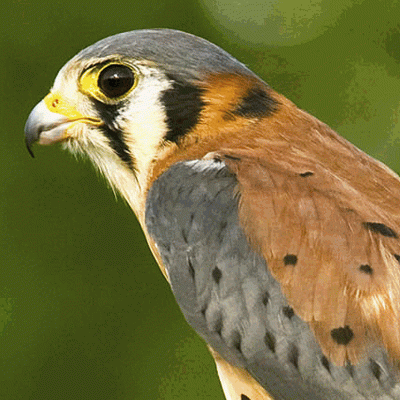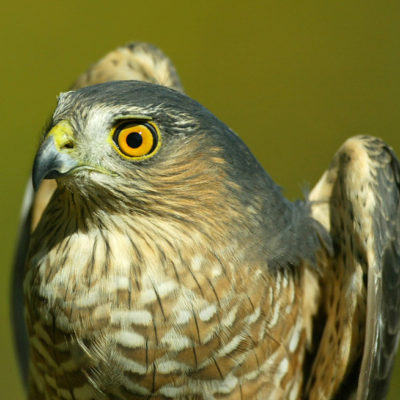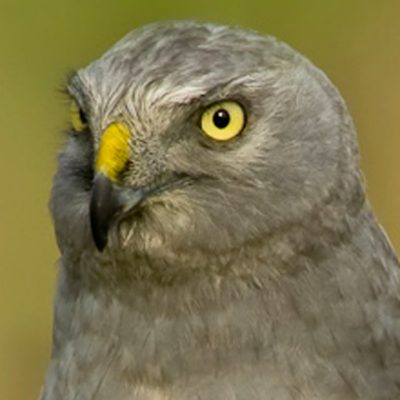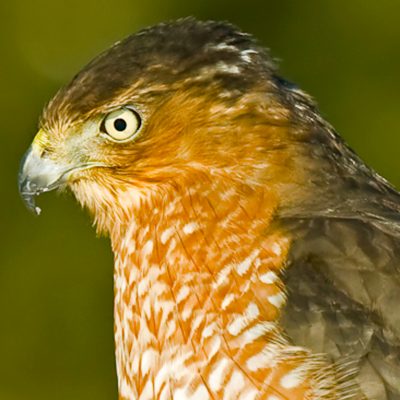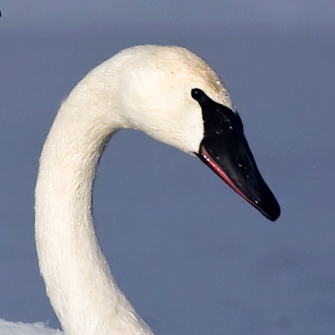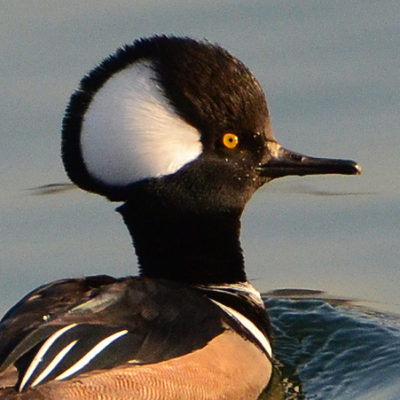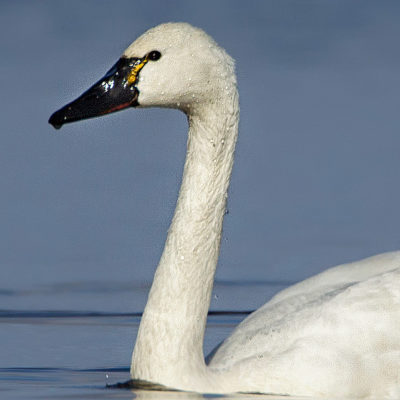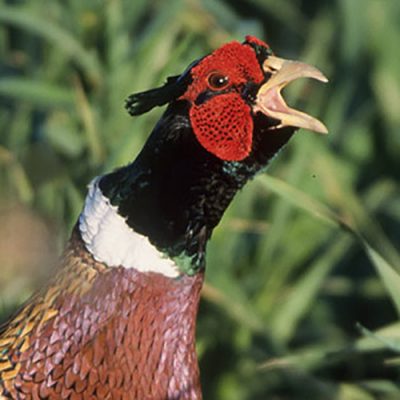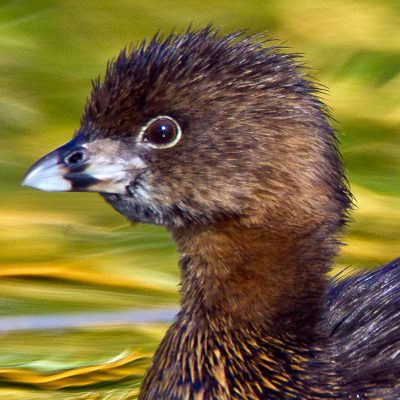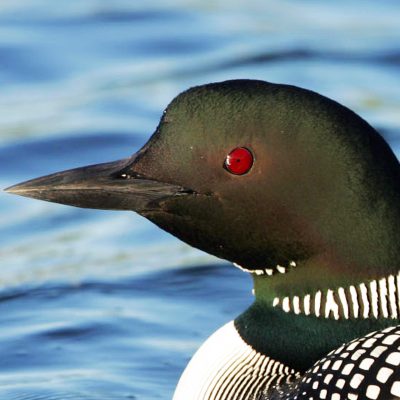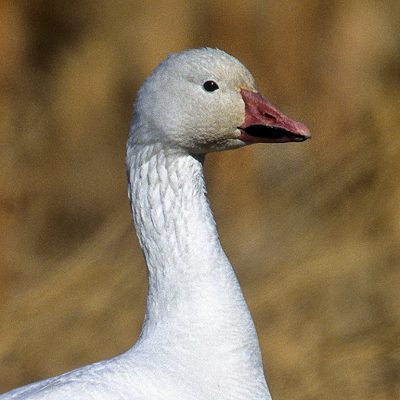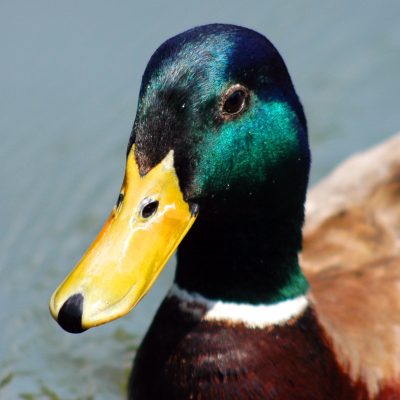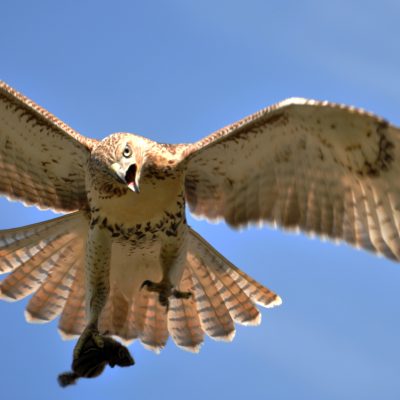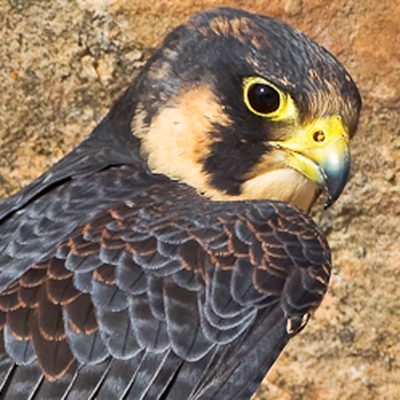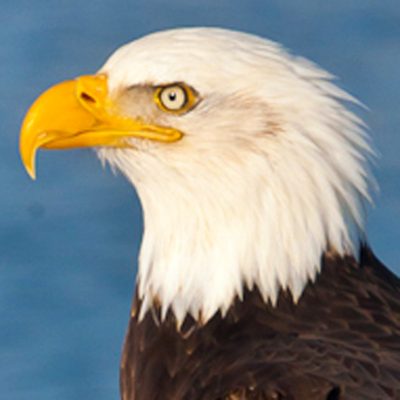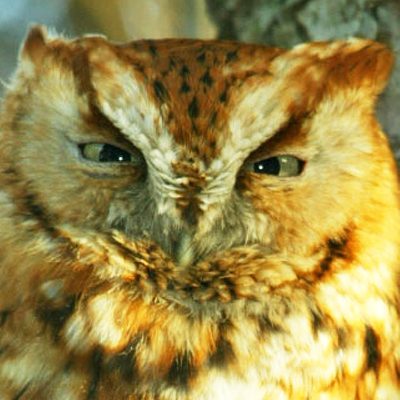$0.89
Android Category: Birds
$0.89
Robins are the most common of all thrushes found in the US. Often associated with the first sign of spring, many of them actually spend the entire year in one place. Growing bushes near your home that have fruits and berries will help hungry robins through the winter. This lilting robin ringtone will give you a musical reminder of spring all year round.
$0.99
Wild turkeys in the 19th century were hunted almost to extinction, but are making a comeback. Some native American tribes refused to hunt the birds because they consider them stupid and were afraid of acquiring the same characteristic after eating them! These birds are polygamous, and the male uses his fanned tail and the gobble in this ringtone to attract females to his "harem".
$0.99
This cheerful bright red bird is the state bird in 7 US states: IL, IN, KY, NC, OH, VA, WV. It is a beautiful and common feeder bird which has extended its range north in the last hundred years. And not just the males sing - females sometimes sing from the nest! Are they giving their mate their dinner order? This ringtone is the familiar melodious cardinal song.
$0.99
Found in backyards across the US and Canada, this songbird has a delightful and unique song. This mostly monogamous sparrow has a mating ritual where the male pounces near the female to get her attention. While they can live to over 11 years, most wild sparrows do not see even their first birthday. But, those song sparrows who do live through the winter, continue to delight us year after year with their beautiful songs. Capture the song sparrow's tune as a ringtone for your cellphone.
$0.99
All chickadees seem to share the same curiosity and enthusiasm, and Carolina Chickadees are no exception. These active little birds are also loyal to their mates, with many of them remaining in pairs for years. We can thank them for doing a superb job of insect control as they are eager gleaners of spiders and other insects. If you have a native plant garden or meadow, these birds will be regular visitors. They also will visit feeders and are especially fond of sunflower seeds and cracked corn.In winter, you can find Carolina Chickadees in flocks. Within these flocks, the birds live under a ranking system with the highest ranking members able to nest within the flock's range. Mated pairs look for a cavity or appropriate nest box where the female builds the nest and sleeps in the box or cavity during the season, while the male sleeps on a sheltered branch nearby. These are interesting little birds to watch. Their pretty little call is a good way to know that you are in the presence of a Carolina Chickadee.
$0.99
It's very difficult to keep these little wrens quiet! Unlike other wrens, Carolina Wrens like to sing very loudly, and they sing a lot -- one captive male sang 3000 times in one day! They spend the majority of their time hopping very quickly on the ground
$0.99
Some people think this bird is singing Oh Sweet Canada, Canada, Canada which is where they breed almost exclusively. This is a familiar singing sparrow whose white throat and yellow patches in front of his eyes are his distinguishing features.
$0.89
With their bright yellow breasts and beautiful “V” necklace, it’s hard to believe meadowlarks are members of the blackbird family. There are two species of meadowlarks – eastern and western – and they are very difficult to tell apart. That is, until they sing. Both have beautiful songs, but very different. The Western Meadowlark has a beautiful complex fluty song; and his Eastern counterpart….a lovely song but a little simpler. Meadowlarks are grassland birds, and Western Meadowlarks can be found in mixed flocks feeding on the ground in the mid-west and western US; Eastern Meadowlarks in the mid-west and eastern US and into Mexico and northern South America. Their territories only occasionally are shared and they rarely hybridize. Both nest in Canada and in the northern US – on their respective sides of the continent! Males in both species of meadowlark have two mates.
$0.89
Sandhill Cranes are very tall birds that are gray overall with a beautiful red crown. They form large flocks in the winter and forage for grains along the grasslands and wetlands of the southwest. Congregations of over 500,000 cranes occur along the Platte River in Nebraska in February and March. They also spend much of January in the southwest from Texas to California. Their common name comes from the Sandhills of Nebraska, which is considered to be their most important stopover point during migration. Their distinctive bugling call can be heard up to two miles away!
$0.89
This vocal songbird is notable for the male's bright red epaulettes and distinctive song. Found liberally throughout the US in marshy and agricultural areas, the flashy males are polygamous and may have many females with nests throughout their territory. But, not all the chicks from these females are his - many are by males from adjacent territories! Get the red-winged blackbird ringtone for your cellphone.
$0.99
Originally a native of the American Southwest, wild caught House Finches were caged and illegally sold as "Hollywood Finches" to the early 20th Century pet trade. When a few were set loose in the East in the early 1940's, they did extremely well. And now the lovely song of this little "exotic species" is one of the harbingers of Springtime throughout the US. Recognized by his bright red head and irrepressible desire to sing during breeding season, the highly adaptable House Finch is now found on feeders and in urban areas around the country.
$0.99
At only 9 inches long, the American Kestrel (Falco sparverius) aka "sparrowhawk", is North America's smallest and most colorful falcon. The male and female look similar, but the male is more colorful, with blue on his wings and head. Like all raptors, the female is larger than the male.Found in meadows, fields, and open grassland, American Kestrels are often seen perched on a wire or fencepost, hunting for small insects and mammals such as grasshoppers, mice, voles, and occasionally small birds.Kestrels are cavity nesters, using an old woodpecker hole or bird house for their 4-6 eggs. Around May, the eggs hatch and both parents incubate their eggs and feed the young. These elegant raptors have a limited number of calls, and the most familiar is this high-pitched kee!
$0.99
The Northern Saw-whet Owl is a small, secretive owl. Its favorite food is deer mice, and it usually gets two meals out of a single mouse. Its call is a clear, pure whistle, that sounds much like a human doing a repeated, tooting whistle. Since they are quite fond of evergreens, Christmas tree farms are a popular place to find Saw-whet owls.
$0.99
Cooper's Hawks are members of the genus Accipiter, sharing that genus with two other forest-loving hawks, the Northern Goshawk and the Sharp-shinned Hawk. Cooper's Hawks get their name from naturalist William Cooper, one of the founders of the New York Academy of Science.
Homeowners with bird feeders may notice that their feeders have become a birdy buffet, not just for the birds eating the birdseed, but for the birds that like to eat feeder birds! Cooper's Hawks have learned to hang out near bird feeders and pick off the little birds that like to eat bird seed. This is why it is important to place bird feeders near cover, such as a bush or hedge, so that the little birds have a place to escape and hide from this quick and agile predator.
$0.99
Northern Harriers are like a cross between a hawk and an owl; they normally hunt during the day, but have the round facial disc of an owl. This not only gives them the appearance of an owl, but also enables them to hunt by sound! This has given them their unique hunting style. Northern Harriers are often seen gliding low over a grassy field. All of the sudden you’ll see one drop down when it hears a prey item, such as a mouse, rustling in the grass. Harriers are also seen “stooping”, or diving straight down at prey like a falcon or buteo, or chasing down prey like an accipiter. Harriers really can do it all! Keep an eye out for a low-flying hawk with a flat, round face. They also have a white rump patch and a deep “V” shape to their wings when gliding. Adult males are pale gray, earning them the additional nickname of “gray ghost”.
$0.99
Cooper’s Hawks are hawks of the forest and are extremely agile predators. They are members of the genus Accipiter, sharing that genus with two other hawks -- Northern Goshawk and Sharp-shinned Hawk. Nests of Cooper’s Hawks will often be found in pine trees. Built of sticks mainly by the male, they are a bit over two feet across with a depression in the middle for up to six eggs and chicks, and often lined with bark. Now of low concern, this is a big change from 50+ years ago when their population, like that of many other raptors, was hit very hard by hunting and the use of DDT.
Homeowners with bird feeders may notice their feeders become a birdy buffet for the birds that like to eat feeder birds. Cooper’s Hawks have learned to hang out near bird feeders and pick off the birds that show up to dine. It is important to place bird feeders near cover, such as a bush or hedge, so that the birds at your feeder have a place to escape and hide from this quick and agile predator.
$0.99
Ospreys are found on all continents except Antarctica and are always found near bodies of water. They migrate from their breeding grounds to warmer climates where their main food, fish, is plentiful. These large predators hover over the water and then plunge in to get the fish which they hold in their talons as they fly back to their nests. Ever see a bird shaking in the air like a dog? This would be an Osprey! These very large birds are very happy to nest on platforms built for them, and raise their chicks, and these platforms have been very helpful in reestablishing birds after years of loss of eggs from DDT.
$0.99
If you hear "who cooks for you, who cooks for you" in the middle of the night in the forest, chances are you are hearing a Barred owl. Opportunistic hunters, Barred owls will prey on rodents, birds and even crayfish which occasionally gives them pinkish color in their feathers.
$0.89
As you can hear in this ringtone, with the deepest of all goose voices, the Canada Goose has a distinctive look and is found all over North America, the UK and Northern Europe. Some birds stay in one place all year (like your local golf course maybe?) and some migrate between breeding grounds and wintering areas. Birds who are not breeding often go to a safe northerly place to molt.
$0.89
One of the most beautiful, elegant and possibly one of the quirkiest ducks in North America is the Wood duck. With the male’s gorgeous colors, beautifully patterned feathers and green crest, he is a delight to behold. This duck, not surprisingly, loves the woods and truly make it his home. Wood ducks will nest in holes at a good height in trees and are the only ducks equipped with claws. They will also nest in nest boxes put up around the edges of wooded lakes. The males make a sort of whistling sound.
$0.89
Look again, that small black bird on the lake is not a duck at all! The American Coot has a small head with a white bill and forehead, and is frequently seen mixed in with ducks and geese on lakes and ponds throughout the year. A member of the rail family, the American Coot isn’t as shy as its cousins, feeding plainly in sight on aquatic vegetation by diving or feeding with his head underwater, similar to other waterfowl. Somewhat awkward-looking on land, coots must run across long stretches of water to take flight. They build floating nests from plant material, and the young can swim right after they hatch.
$0.89
It's hard to believe that this bird is not native to North America and Europe, but they were introduced from Asia as game for hunting and it is believed thy were brought to the UK as early as the 11th C. Known in Europe as the Common Pheasant, their numbers are declining as they nest on the ground in deep field cover and their nests are often destroyed by farming. As a result, many populations of these pheasants are artificially maintained by captive introductions. During the breeding season, the males have a harem which they defend from other males - sometimes in pitched battles.
$0.99
The haunting call of the Loon is ubiquitous on lakes in the woods of the Northern US and Canada. The long, haunting song almost sounds like a wolf howl. They also have a distinct call that is called a "laugh" that sounds a little bit like a person laughing. All of their vocalizations are unique and beautiful, and help define the spirit of the northern wilderness. Common Loons need wild places. Their heavy, torpedo-like bodies are built for swimming fast after fish in lakes and ponds. In fact, Common Loons are so well-made for swimming that they cannot walk on land. Their legs are so far back on their bodies, and their bodies are so heavy, that they cannot stand upright. These birds' lives are completely linked to water and they go ashore only to raise their young. Mercury poisoning is a current threat to loons, as is lead poisoning from fishing sinkers. If you fish, think about using sinkers and jigs made from tin, steel or a tungsten-nickel alloy rather than lead. You'll be helping loons, eagles and lots of other animals! This beautiful loon call ringtone is a wonderful reminder of the deep woods.
$0.89
These pretty and sociable white geese with black wingtips have made a huge recovery since their numbers declined nearly 100 years ago due to over-hunting. Snow Geese nest on the high arctic tundra in Canada, Alaska, Greenland and Siberia, and during migration can be seen in huge numbers in staging areas. They are fast, high-altitude flyers and are easily found when on the ground as their sound generally precedes them!
$0.89
The Mallard duck is found in freshwater lakes and streams all across North America. This male has the gorgeous green iridescent head for which Mallards are known. The females are much less flashy and their brown feathers blend in well as they incubate the eggs and care for their ducklings. This mallard duck quack ringtone makes a great message alert.
$0.99
The most common hawk in the US, this large hawk is a familiar sight throughout North America and can be found in cities as well as in rural areas. Efficient hunters, they prefer to hunt from a perch and pounce on rodents and small mammals. They are best known for their red colored tails and there are numerous geographic variations in color. Many people are passionate about these hawks, and some of the more famous ones, like Pale Male who has taken up residence in a fashionable area of New York City, have become icons in the clash between humans and animals. They are monogamous and mate for life.
$0.99
Peregrines are astonishing birds who can reach speeds of up to 69 mph flying in pursuit of prey and over 200 mph when in a "stoop" or dive. Unlike other hawks, Peregrines don't grab their prey with their talons, but hit them with enormous force, knocking them unconscious and easier to grab. The word "peregrine" means "wanderer" and this sleek, dark raptor has one of the longest migrations of any bird of prey. They are one of the most widespread bird species in the world, and their adaptability to life in cities has enabled them to come back from the brink of extinction. They can be found on almost every continent.
$0.99
The Bald Eagle was dubbed America’s national bird in 1782, much to the chagrin of Benjamin Franklin who suggested the Wild Turkey as the symbol of freedom and justice. Adults are distinguished by their full white heads and tails, but young birds are overall brown with some white mottling. Bald Eagles can live up to 28 years in the wild and will mate for life. They prefer areas around large bodies of water that are not overly developed as they can be sensitive to human activities. Eagles mainly feed on fish, but are not opposed to small mammals, birds and reptiles. They are also thieves! Bald Eagles are known to harass other birds of prey until they drop their catch and take it for themselves. Their calls are surprisingly small for such a large bird.
$0.99
The Eastern Screech Owl has a variety of calls. The most well-known sounds like a ghostly horse winny. The Eastern Screech owl comes in two color morphs, with the red color morph being much less common than the grey.
